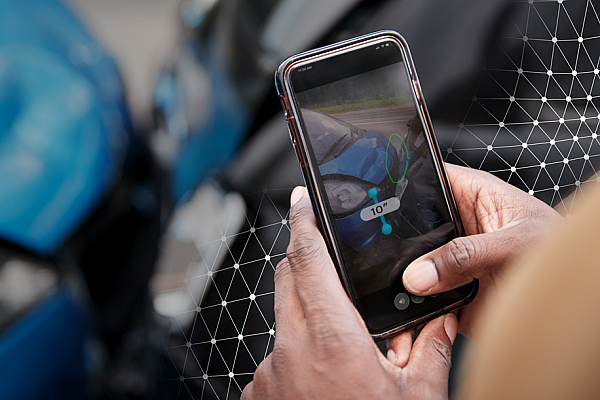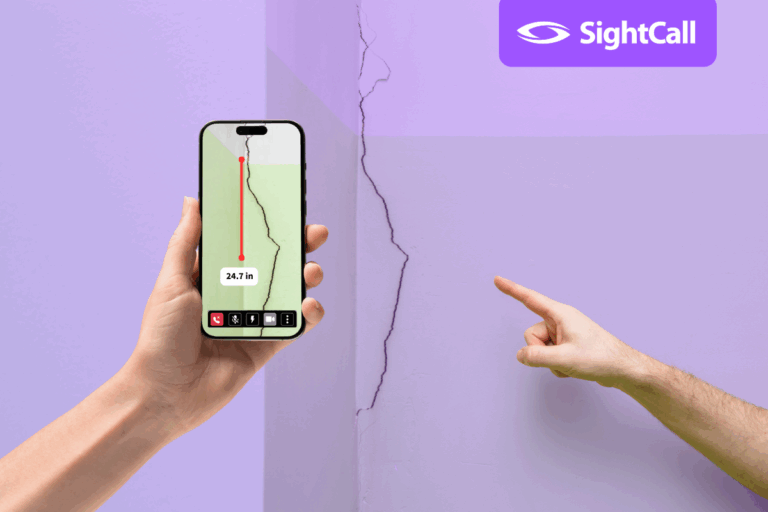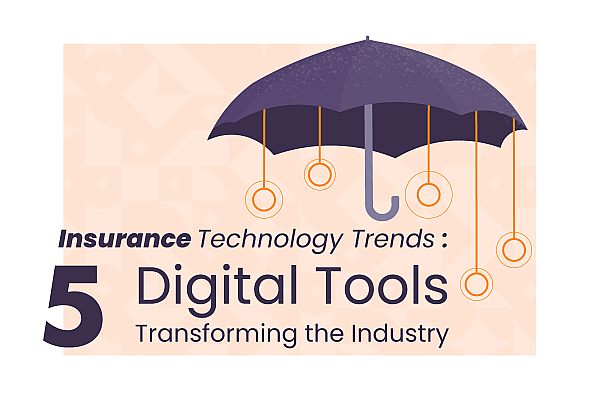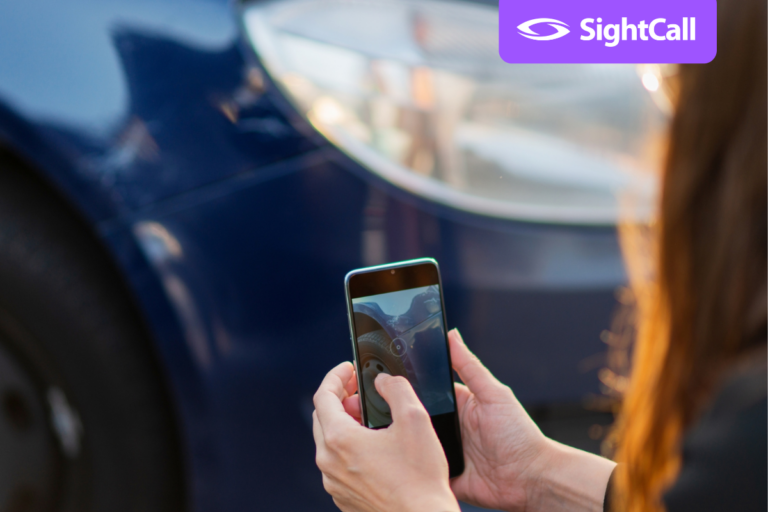As the insurance industry looks to further digitize the customer experience, Augmented Reality (AR) powered visual claims are transforming how insurers interact and support their customers during the underwriting and insurance claims process.
What are Augmented Reality-Powered Visual Claims?
Augmented Reality blends the physical and digital worlds by layering computer-generated images and text onto a user’s view of the real world. Used in many ways within insurance including visual claims, damage estimates, explanation of insurance plans, and more, AR-powered claims technology provides an interactive, enhanced, and frictionless experience that drives efficiency, accuracy, and customer satisfaction.
With AR-powered visual claims, onsite adjuster visits are replaced with live video sessions where the policyholder can show an adjuster damage in real-time so their claim can be filed quickly and efficiently without anyone having to travel to the policyholder’s home. Adjusters can pause live video feeds, activate geolocation, take remote AR measurements, share documents, and collect any necessary signatures to satisfy the claim and expedite policyholder reimbursement. When integrated directly into your existing claims management system, you’re able to save time, money, and resources.
A recent report on the future of claims estimates that by 2025 more than 80% of auto claims and 50% of non-injury claims will be processed virtually.
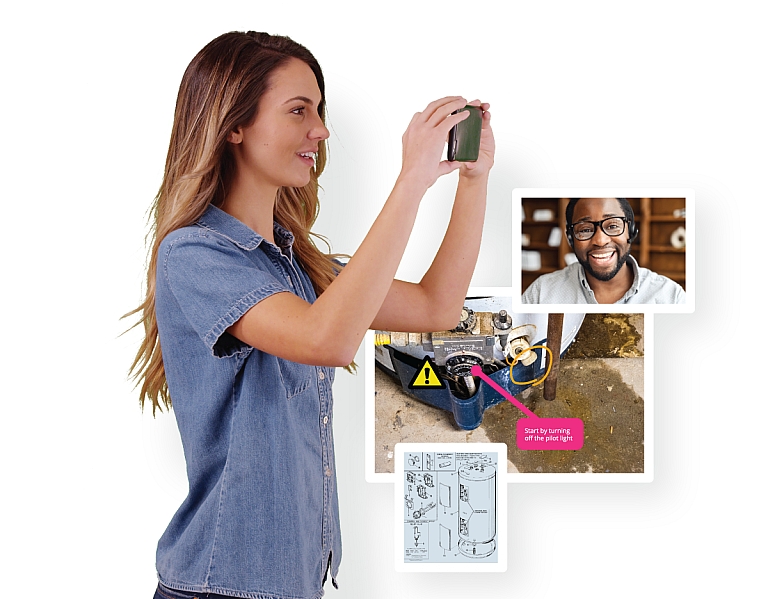
What are the Benefits of AR-Powered Visual Claims?
Through using AR-powered visual claims, insurers can satisfy several critical measures:
Improve Customer Satisfaction
satisfied customers are 80% more likely to renew their policies than unsatisfied customers. With AR-powered visual claims, insurers can significantly shorten the claims lifecycle, provide faster support to customers when they need it most, and reduce unwanted travel to a policyholder’s home, enhancing the customer experience and fostering loyalty.
- Lecari Group saw NPS increase from the mid-80s to over 90% with SightCall’s visual claims solution.
- AXA Greece significantly reduced customer wait times with their MyAxaway Visual Claims App- powered by SightCall. As a result, AXA Greece’s NPS rating increased op 85%.
Reduce Expense Ratio
as loss adjusters no longer need to travel to every policyholder’s home to satisfy and fulfill a claim, unnecessary travel is drastically reduced which results in serious cost savings for the insurer. Now insurers can drive greater efficiency within their teams, as adjusters can support more customers in less time as well as have more time to focus on higher-value claims and policyholder accounts.
Decrease Loss Ratio
AR-powered visual claims allow insurers to collect better data and improve accuracy during both the underwriting and claims process. Features such as geolocation and OCR readings significantly reduce the likelihood of fraudulent or supplement claims.
Improve Sustainable Business Outcomes
As unnecessary travel to policyholders’ homes is reduced, insurers can track and report on their reduction in travel and subsequent CO2 emissions.
In less than a year of using SightCall, Allianz was able to process over 100,000 remote video claims and save their adjusters from driving over 6.3 million kilometers in unnecessary travel. With the average car within the EU emitting 107.8g/km of CO2, this reduced CO2 emissions of close to 680 million grams in less than 12 months for Allianz.
“The insurance industry is constantly evolving its digital landscape, even more so now. The adoption of video expertise since its inception and the adoption of SightCall since its inception has allowed us to have total mastery and knowledge, generating a series of benefits for the supply chain and for our Group, even in a time of global emergency, including: the ability to operate without geographical limits and in total safety in every area of the entire national and international territory, as well as the containment of intervention time, settlement and the average cost of the claim”
– Giovanni Lercari Managing Director, Lercari Group
What Features and Functionality Are Important to Insurers?
With SightCall’s AR-powered visual claims technology, insurers can tailor features to match their use case. Whether you are handling a property or motor claim with a customer or working through a repair with a craftsman, you can customize the SightCall experience to meet your company’s needs.
- Flashlight – to accurately assess damage even in poorly lit locations
- AR-Measurement – to record real-world measurements directly to the policyholder’s claim
- OCR Reading and Translations – to eliminate user error when collecting product information, and reduce fraud as the damaged product’s make and model can be verified, no matter the language, and a like-for-like replacement quickly found
- Geolocate – to accurately confirm the location of the policyholder making the claim, reducing fraudulent and supplemental claims
- Live Signature Capture – allowing inspections or claims to be remotely signed-off, expediting policy premium details during the underwriting process, customer reimbursement during a claim, or for repair job sign-off
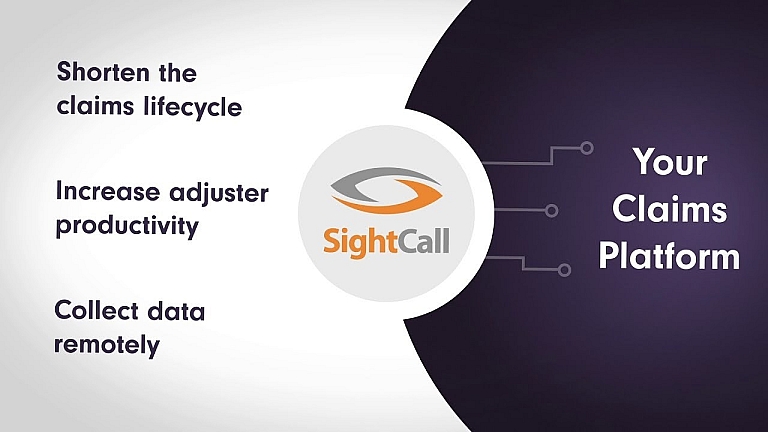
How is AR-Powered Visual Assistance Being Used Within Insurance Today?
Visual Claims
Policyholders can now show damage in real-time and enable loss adjusters to assess damage remotely via the customer’s mobile phone. If a picture can speak a thousand words, just think about what the power of video can do for the claims process. Adjusters can now collect clear images and live video footage for detailed assessments of a claim with an extremely high degree of accuracy. Video calls can be initiated through your website, mobile application, or chatbot and you can further minimize friction by employing an App free experience with WebRTC or No App Experience. Live video claims provide a faster, more efficient claims experience that allows claims to be resolved in hours, not days or weeks, and without anyone ever having to enter the policyholder’s home.
Did you know: Replacing a $200-$500 on-site visit and post-treatment with a live video session with the customer, can cut costs by up to 80%.
Remote Inspections & Risk Visits
Inspections during the underwriting and claims process can be carried out remotely without sending anyone to the policyholder’s home or business site. This enables underwriters to accurately assess critical risk factors without needing to travel unnecessarily. Underwriters can provide accurate coverage on a policyholder’s property for example, as well as outline any risk factors that need immediate attention from the homeowner. The underwriting process is more efficient, and the customer has a far more enhanced and tailored experience.
Repair Quotes and Quality Control
Quotes for repair work through partners or handymen during the claims process can be given in minutes and their work assessed remotely. Repair partners can visually see the damage so they can offer more precise and accurate quotations for repair work. This data can then be fed back into existing internal systems and used as a reference for other similar claims. If the claim cannot be cash-settled and goes through to the fulfillment phase, repair quotes can be given, and work assessed accurately by the insurer to avoid overpayment.
Remote Sales and Subscriptions
New customers looking to take out a policy can interact and engage with an insurer via a remote sales session where legal documentation and contracts can be shared, and the necessary digital signatures collected. Customers can interact visually with a provider, offering an added sense of security from the comfort of their own homes.
Remote Assistance & Telehealth
Remote assistance and telehealth enable policyholders to get access to the help they need whether at home, on the road, or during a trip abroad. If a policyholder has to access their health insurance on a trip abroad, they’re now able to engage with their provider via a live telehealth session so that they can be assessed, and the next best course of action can be agreed on.
